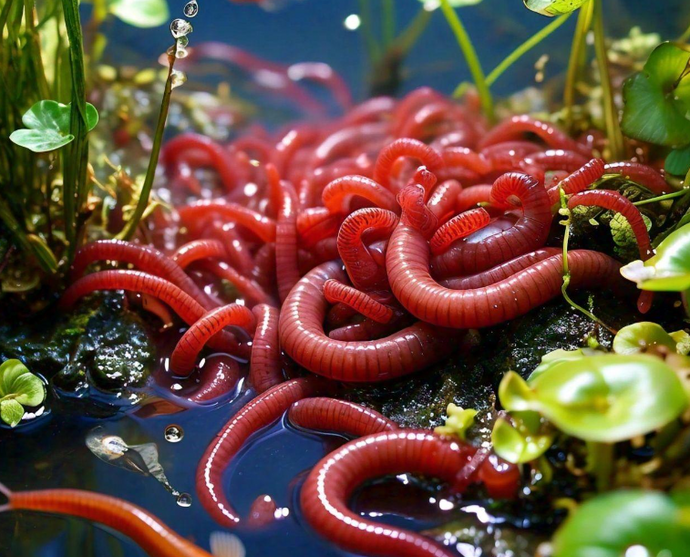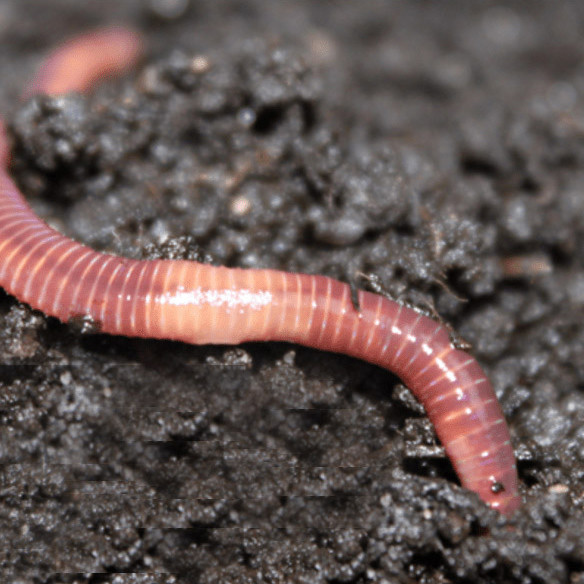Red Wigglers: Your Eco-Friendly Service for a Greener Yard
Red wigglers, or Eisenia fetida, offer a sustainable method to enhancing garden wellness through vermicomposting. These worms not only assist in the malfunction of organic waste however also add to enhanced dirt framework and fertility. By integrating red wigglers into your gardening techniques, you can successfully manage waste while nurturing a vivid community (red worms). The benefits extend beyond mere composting; understanding the subtleties of their treatment and optimal use can dramatically elevate your horticulture efforts. What necessary techniques can ensure your vermicomposting system prospers while maximizing its effect on your garden's vitality?
(Lake James Bait)
What Are Red Wigglers?
Although usually mistaken for normal earthworms, red wigglers (Eisenia fetida) are a distinct species known for their performance in composting raw material. These worms prosper in rich, organic environments, such as compost heap and vermicomposting systems, where they play an essential duty in damaging down waste. Unlike their more typical equivalents, red wigglers prefer a warmer habitat, normally in between 55 ° F and 77 ° F, which optimizes their task and productivity.
Red wigglers are defined by their reddish-brown pigmentation and fractional bodies, which can mature to 4 inches in size. They have a special capability to take in and absorb organic materials at a remarkable rate, processing as much as half their body weight daily. This quick disintegration procedure not just enhances the dirt however also contributes to the overall wellness of the yard ecosystem.
In terms of recreation, red wigglers are prolific, capable of producing cocoons that include multiple eggs. This enables for fast population development, making them an ideal option for composting ventures. Their flexibility and starved cravings for organic waste setting red wigglers as a vital ally for environmentally mindful garden enthusiasts seeking lasting methods.
Benefits of Utilizing Red Wigglers
Making use of red wigglers in the yard provides many benefits that enhance both dirt quality and plant health. These earthworms are exceptional decomposers, breaking down raw material such as kitchen area scraps and yard waste right into nutrient-rich spreadings. These castings, often described as "worm gold," supply crucial nutrients that boost soil fertility, promoting vibrant plant development.
Red wigglers also enhance soil structure. Their burrowing task aerates the soil, assisting in much better water infiltration and root infiltration. This results in a healthier root system, which is important for nutrient uptake and general plant vigor. In addition, the presence of red wigglers enhances microbial task in the soil, producing a growing environment that adds to condition resistance and improved plant wellness.
Another significant benefit of utilizing red wigglers is their capacity to minimize waste. In recap, integrating red wigglers right into horticulture techniques yields considerable advantages, making them a valuable enhancement to any eco-conscious yard.
(Lenoir Worm Farms)
Exactly How to Beginning Vermicomposting
To begin vermicomposting, it's vital to develop an ideal setting for red wigglers to grow, as their success directly affects the efficiency of the composting procedure. Begin by picking a container, such as a plastic or wooden bin, with sufficient drainage and air flow. A dimension of approximately 2 square feet is optimal for a home, enabling a convenient worm populace.
Next, prepare bedding product that is wet but not overly wet. Shredded newspaper, cardboard, and coconut coir are excellent choices, providing a comfortable habitat while additionally working as a carbon resource. Fill the bin with 4 to 6 inches of bed linen.
After establishing the bed linen, present your red wigglers. A regular starting population is about 1 pound of worms, which can eat around half a pound of food scraps daily. It is vital to include food scraps slowly, concentrating on vegetable peelings, fruit waste, and coffee grounds, while staying clear of meat, dairy products, and oily foods to prevent smells.
Preserving a Healthy And Balanced Worm Container
Once your red wigglers are settled right into their new bed linens, preserving a healthy worm bin ends up being vital to ensure ideal composting conditions. Preferably, the worm bin should be maintained wet but not soggy; a humidity degree around 60-70% is optimum.
Temperature control is equally vital. Red wigglers flourish in environments between 55 ° F and 77 ° F(13 ° C to 25 ° C) Prevent exposing the container to extreme temperature levels; extreme heat can eliminate the worms, while excessive cold can slow their activity.
Oygenation is critical to stop anaerobic problems, which can cause undesirable smells and damage the worms. Turn the bedding gently every couple of weeks to advertise air flow and disperse food uniformly.
Feeding your red wigglers is another important aspect. Deal a well balanced diet plan of kitchen scraps, preventing citrus and spicy foods, which can be damaging to their wellness. By frequently monitoring these elements, you can make sure a thriving community within your worm container.

Tips for Using Worm Castings
Routinely integrating worm spreadings into your garden can considerably enhance soil wellness and plant development. To effectively make use of worm castings, start by establishing the suitable application price, which generally varies from 10-20% of the total dirt volume. This makes sure optimal nutrient accessibility without overwhelming your plants.
When applying worm spreadings, mix them into the top couple of inches of soil around well-known plants or integrate them into your seed-starting mix for new seedlings. see post Additionally, think about developing a worm tea by soaking worm castings in water for 24-48 hours.

Conclusion
The usage of red wigglers in gardening methods presents a sustainable technique to squander monitoring and soil enrichment. The integration of red wigglers into gardening regimens ultimately sustains both eco-friendly balance and agricultural efficiency. red worms.